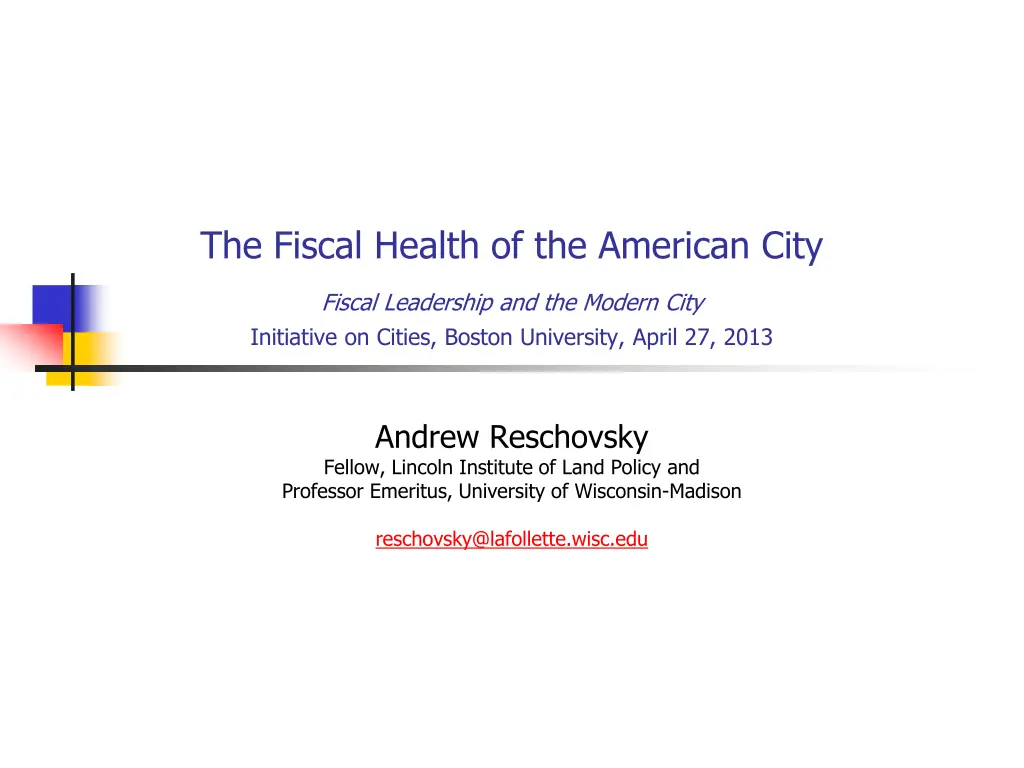
Understanding Fiscal Health in American Cities
Explore the concept of fiscal health in American cities, focusing on factors contributing to weak fiscal health, structural fiscal health, and comparisons among large central cities. Learn what fiscal health means, the risks of insolvency, and the importance of government revenues in meeting public service responsibilities.
Download Presentation

Please find below an Image/Link to download the presentation.
The content on the website is provided AS IS for your information and personal use only. It may not be sold, licensed, or shared on other websites without obtaining consent from the author. If you encounter any issues during the download, it is possible that the publisher has removed the file from their server.
You are allowed to download the files provided on this website for personal or commercial use, subject to the condition that they are used lawfully. All files are the property of their respective owners.
The content on the website is provided AS IS for your information and personal use only. It may not be sold, licensed, or shared on other websites without obtaining consent from the author.
E N D






















